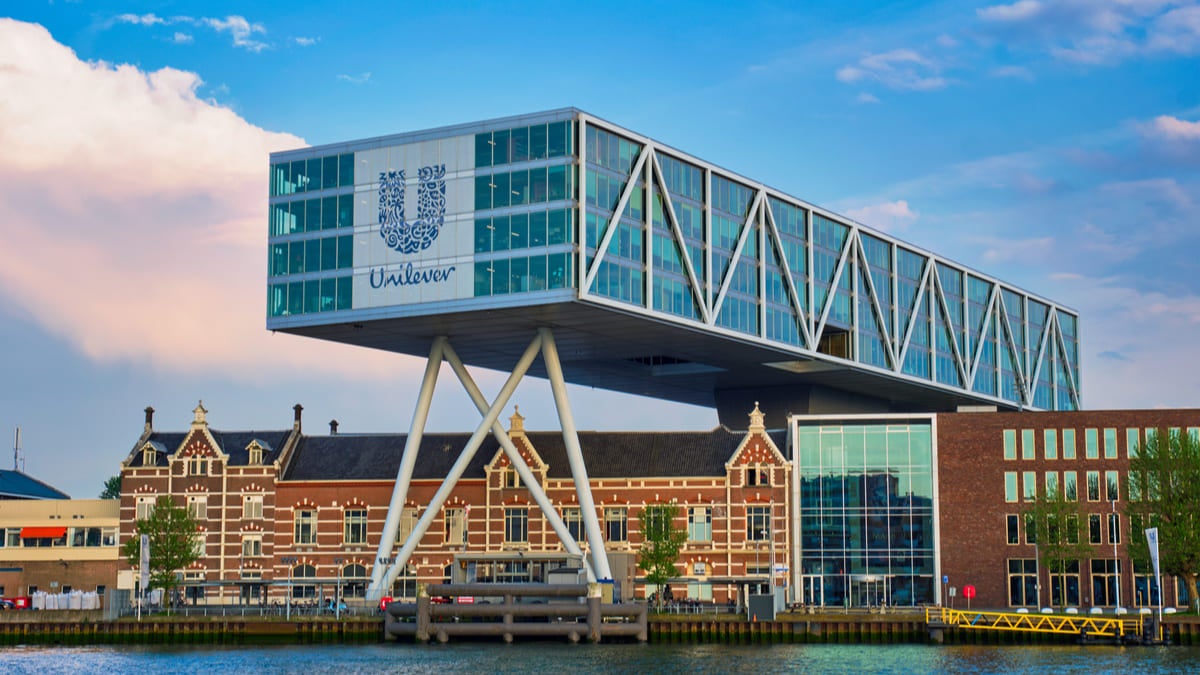
Agility has entered the lexicon of many companies over the past two years. Once limited to a niche corner of organisations, agile has become a core competency for all types of businesses operating in an ambiguous and volatile environment.
In the early days of agile, teams – known as squads – would comprise software developers, testers and analysts. As spelled out in the 68-word Agile Manifesto published in 2001, these squads would focus on putting customers at the heart of the delivery process and take a flexible approach to project management, ensuring they were able to adapt to change rather than just stick to a plan.
Many industries have since realised the benefits of an agile approach and are now applying it to not only survive volatility, but to stay ahead of the innovation curve.
For online retailers, agile can mean rapidly rolling out updates to websites with new features or product lines. In the pharmaceutical industry, which is notorious for its slow drug discovery, squads can accelerate development time by involving customers early on in the R&D process. Manufacturers in the aerospace industry can implement agile for faster design cycles. Agile methods have also been adopted by mining and metals companies.
The need to be agile has been heightened by the coronavirus pandemic – unpredictable market dynamics and supply chain disruptions have seen agile go from being optional to imperative.
Research conducted by McKinsey in the first few months of the pandemic found that companies that fully adopted an agile model before the crisis started had outperformed non-agile companies.
Thirty-five per cent of agile business divisions surveyed by McKinsey said that employee engagement was significantly better; 33% said there was a significant improvement in their operational performance; and 31% reported a significant uptick in customer satisfaction.
But the urgency for agility has also seen more and more companies claiming to be agile without fully understanding what it means. It’s more than iteration cycles and teams holding daily stand-up meetings. Being agile requires an organisational shift that can deliver efficiencies across an entire business.
Agile teams and remote working
Agile teams work best when they’re in the same location in close-knit groups as it allows for in-person contact. This helps to build trust, improves problem-solving and results in faster decision-making. But the pandemic meant companies had to abruptly transition to remote working.
Those businesses that were already operating in an agile environment would have been well prepared to react to the disruption. But companies that decided to adopt an agile approach as a result of the pandemic may have had a culture shock.
Companies like Amazon, ANZ and Spotify are agile because they don’t have embedded cultures to change
“Agile involves significant and challenging cultural shifts within an organisation and, from an employee’s point of view, it demands a considerable change of habits,” says Tim El-Sheikh, chief executive of tech development studio Nebuli and a former software consultant advising on how to implement agile methods.
“We tend to just stay within our bubbles unless forced to make changes to working practices, as we’ve seen during the pandemic,” he says. “These comfort zones need to be broken if businesses are to achieve successful agility.”
Agile and remote working may seem incompatible, given that the premise of agile is based on regular face-to-face conversations to exchange information and deliver results quickly. Electronic communication can lead to misunderstandings as non-verbal cues can be difficult to read, and it can be hard to replicate the feeling of in-person camaraderie.
With remote working blurring the line between personal and working lives, being respectful of team members’ boundaries is essential if managers want to recreate the same level of team bonding that typically happens in an office.
Companies need to revise the ground rules for communication to avoid team members talking over each other and to reduce back-and-forth. Using tools such as virtual whiteboards can help to avoid confusion and capture the collective view. And there’s a need to be mindful of the fact that some team members may not want to always have their camera turned on during virtual meetings.
Bringing an agile coach on board
Managing agile team members is all about good leadership. The pandemic may have shown that companies don’t need a full in-house tech team to be truly agile, but agile can’t be implemented successfully without an in-house agile coach, says Jonathan Priestley, head of portfolio modernisation at IRIS Software Group.
The agile coach isn’t a technical role but a valuable one for encouraging those in leadership positions to embrace agile methods and overcome resistance. A survey by Forbes Insight and the Scrum Alliance found that 87% of executives polled viewed the CEO as the key proponent of organisational agility. Long-time employees can be the biggest detractors and stand in the way of agile being adopted.
Bringing an agile coach into the fold is particularly important for companies that have traditionally relied on what’s known as ‘waterfall delivery’. Under this linear system projects are worked on one phase at a time, with decisions made from the top down. The agile method sees teams work on different phases of a project simultaneously, using data and knowledge-sharing to accelerate decision-making.
“Companies like Amazon, ANZ and Spotify are agile because they don’t have embedded cultures to change. Companies that have a long history of waterfall delivery face a very different set of challenges because agile uproots their more traditional ways of working,” says Mivy James, digital transformation director at BAE Systems Applied Intelligence.
Making the switch to being agile isn’t straightforward, adds James, and this is where agile coaches come in. They can teach C-suite executives what to expect from an agile approach, as well as help them understand how change should be governed and how rapid transformation should be delivered within an organisation that usually works within a different set of processes.
SpaceX: Agile is rocket fuel for tech companies

2021 was the year of the billionaire blast off between Jeff Bezos, Richard Branson and Elon Musk. But it’s the latter of the three that is arguably winning the space race.
SpaceX has proved that a dose of agile is just as important as rocket science when it comes to getting spacecraft off the ground. Musk’s first ever venture was software firm Zip2 and he’s since gone on to apply the principles of agile software development to hardware – particularly the concept of ‘fail fast’ – including at Tesla.
Instead of designing a single prototype, building it and then testing it (think: a waterfall system approach to engineering), SpaceX builds multiple prototypes at the same time. These are then tested rapidly and improvements are made to designs based on feedback and lessons learned. As a NASA report put it: “SpaceX focuses on rapidly iterating through a build-test-learn approach that drives modifications toward design maturity.”
This agile approach has meant that SpaceX has managed to establish a first-mover advantage in the space race. Rapid prototyping has also helped the spacecraft manufacturer to lower production costs, while continuous improvement and innovation will lower the price of future rocket launches. The advertised price for launching its Falcon 9 rockets is currently in the region of $30m (£22.8m) but Musk said in February that the aim is to bring it down to under $10m over the next few years.
Getting the culture right
For an agile approach to be a success, creating buy-in among C-level executives is essential. Leadership teams effectively set the tone for the rest of an organisation and agile requires all stakeholders to place trust in the process. Companies must also be prepared for an element of chaos as ideas and designs are tweaked during iterations, says Priestley.
“If agile is to flourish, businesses need to be open to changes in operational thinking. Even tech teams with deep experience of agile methods struggle when the environment isn’t aligned to their ways of working. This can create a negative unhealthy environment if issues aren’t addressed,” he adds.
El-Sheikh agrees: “It’s critical that all the people within an organisation accept and embrace the change to ensure agile is a success.”
James argues that agile can only truly deliver on its promises if the culture and communications across the board are agile. “If an agile part of an enterprise comes into contact with a part that is following the process but doesn’t have an agile culture, the business gearbox has to work harder,” she says.
Getting the culture right helps to attract talent that fits the agile model. But it’s just as crucial to invest in the development and progression of the workforce, says Hadas Mor-Feldbau, global director of human resources at workflow management software company Monday.com.
“Once you help people to hone their skills, you can allow them to become part of the [agile] solution,” she says. “Empowering people to have more ownership and impact will help companies to create and retain a more agile workforce.”
While tech teams might be expected to be comfortable with the method from the get-go, some employees will need support growing into the approach, says Priestley. Still, it’s important to remember that agile isn’t a panacea and not all business functions are suitable candidates for agile methods.
“While the principles of agile ‘done properly’ are always going to be the same, it’s going to look different from organisation to organisation. A 5,000-person company will have to approach agile in a completely different way to a 15-person company,” Priestley concludes.
Unilever: Benelux offers food for thought on agile

Agility and the food and drink industry may seem like chalk and cheese, given how rigid and regulated the industry can be. But supply chain shortages during the pandemic have only served to emphasise the need for manufacturers to be nimble.
Unilever’s adoption of agile ways of working is a prime example of how non-tech companies can successfully implement agile methods.
Prior to coronavirus, Unilever’s refreshment division in the Benelux region had decided to adopt an agile approach back in 2019. The decision was taken in order to enhance the product development phase and shorten the time it takes to bring new products to market.
Employees were split into several teams and discussions with team members led to pain points being identified. The result was more focus and fewer distractions.
In late 2020, almost a year after adopting an agile approach, the Benelux division reported a 25% growth in its project capacity and an improved time to market. Employees reported a decrease in pressure, with 85% of team members saying they were happy with the agile methods implemented. Eighty-four per cent experienced improved focus and 92% said they would recommend the agile way of working to colleagues.

Agility has entered the lexicon of many companies over the past two years. Once limited to a niche corner of organisations, agile has become a core competency for all types of businesses operating in an ambiguous and volatile environment.
In the early days of agile, teams – known as squads – would comprise software developers, testers and analysts. As spelled out in the 68-word Agile Manifesto published in 2001, these squads would focus on putting customers at the heart of the delivery process and take a flexible approach to project management, ensuring they were able to adapt to change rather than just stick to a plan.
Many industries have since realised the benefits of an agile approach and are now applying it to not only survive volatility, but to stay ahead of the innovation curve.
